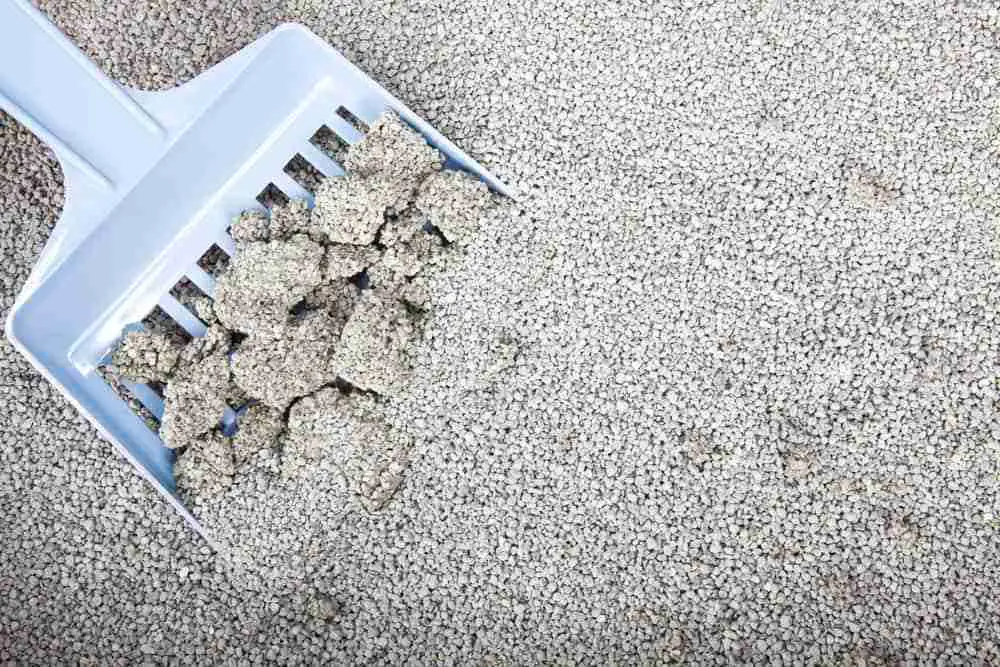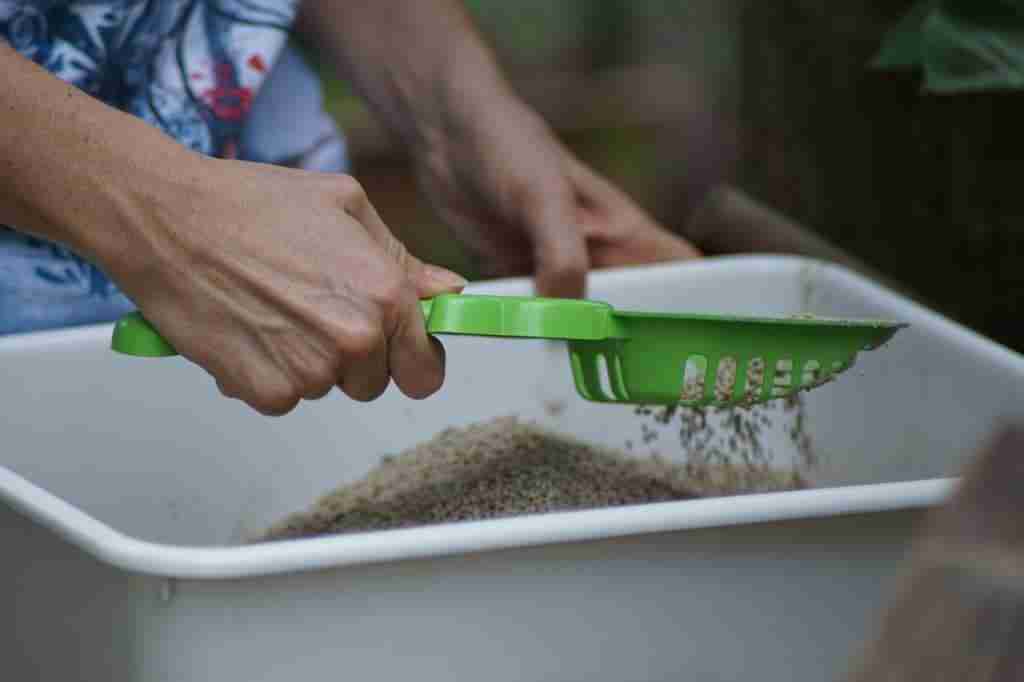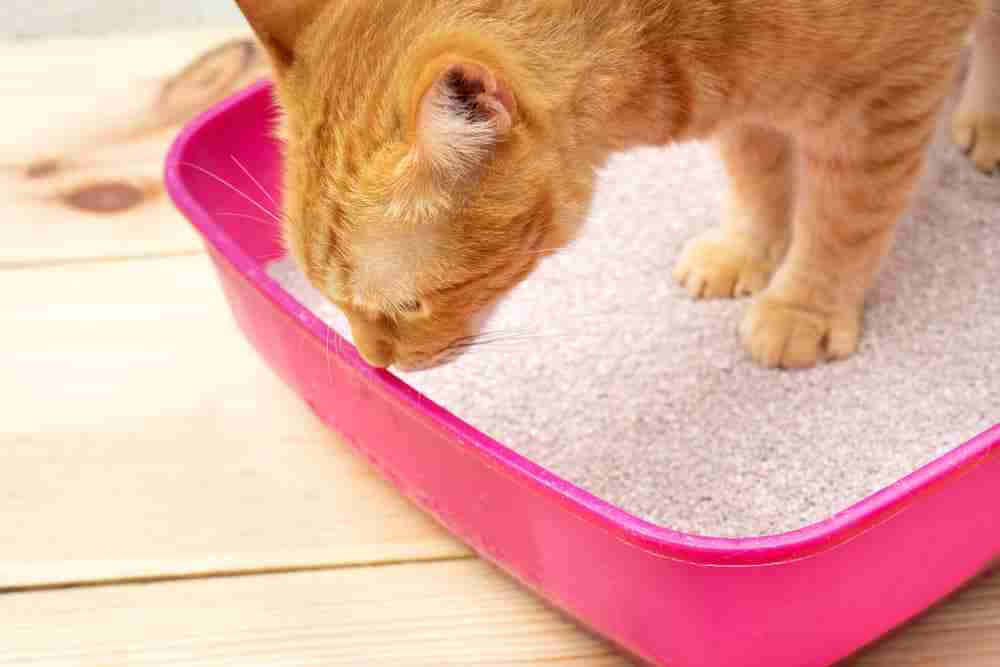Are you thinking you might be able to blend your way to a better cat litter option? Can you mix clumping and non clumping litter? It is an interesting question. Are there cost savings or performance benefits to be had? Let’s check it out and see! We will look at what the main differences are between these two types of litter and what you can expect from mixing and matching :
Characteristics Of Clumping Litter
Clumping cat litter has not been around as long as non-clumping litter. It is a relatively modern development. Although it is generally more expensive than non-clumping litters it is a popular choice with cat owners as it does have some distinct advantages, although it also comes with some disadvantages :
Lasts Longer – a litter tray of clumping litter tends to last longer. Simply put this is because the litter clumps when your cat pees and then you fish out the clumps with a purpose-made spade each day. This way you are constantly pulling out the used litter and leaving fresh, unused litter. You then top up the tray every few days. The overall effect is that your tray of litter can last many days before you have pulled out all the clearly used litter.
Better odor control – clumping litter offers better litter odor control as you are constantly emptying out the used litter clumps so you haven’t got bad odors hanging about! The smell of ammonia off a litter tray can be particularly nasty and with clumping litter, you can avoid that smell!
More dust – this litter is always made from clay that sticks and binds together when it comes into contact with water. The problem with clay is that it tends to come with dust. Some cats and owners don’t get on with dust and may have reactions to the dust (asthma)
More expensive – a major disadvantage of this litter is that it is expensive compared to non-clumping litters. This is because this clay litter needs excavating and processing as well as the transport to store, so has some pretty high input costs.
Litter Tracking – clay litters can be a pain from the point of view of litter tracking. This is when particles of the litter get caught between your cat’s paws in the fur between pads and end up getting carried out of the tray and deposited around your home – yuck!

Characteristics of Non Clumping Litter
Non-clumping litter is any material that is used in a litter tray that simply stays loose, it does not clump. Essentially the material can be anything that has some absorbency. Here are some of the major advantages and disadvantages of this type of litter :
Less dust – Recycled newspaper, silica grit and some agri byproducts used for litter that does not clump can be dust-free, so if you or your cat suffers from asthma or you just don’t like the idea of litter dust floating about your home traditional litters can be a better choice.
Cheaper – Litters made from corn stalks, coconut husks, wood pellets, or even standard clays tend to be cheaper than clumping clay litters as they are simply easier to produce and have more widespread availability. Sometimes the cost to buy a bag can be a cheaper upfront cost. The question becomes how long will a whole bag last before needing changing out as you don’t remove the used litter piecemeal as with clumping options
More like nature for the cat – some cats prefer non-clumping clays and other materials as they feel more natural underfoot. They don’t have solid concrete like clumps to negotiate…
Absorbs odor until saturated, then time to change – Non-clumping litters can be great at odor control, super absorbent with extra perfumes and deodorizers to boot – but when they are done they are done and they then stink which is the signal for you to change the litter out. Can you live with the stink?
Needs the whole tray changing out – when traditional litter has absorbed everything it can then the whole tray needs changing out and refilling – not just a bit of a daily tidy up like with clumping litters.
Better for the environment – Non-clumping litters are generally better for the environment. Often recycled materials can be used such as agricultural by-products, wood pellets, paper, coconut, walnut husks or pea, or the like but even clay litter options can be made from clays that are close to the market so have less travel time than specialist clumping clays. If the environment is your thing, you end up with non-clumping litters.

Why You Might Want To Mix Them
Clearly, these different styles of litter have very different characteristics that at first glance don’t seem to go that well together so why might you consider mixing them?
Because you’re nearly out and the next bag is different – probably most cat owners have come across this situation. You’re nearly out and the store didn’t have your usual in stock. You got forced to change the type and have ended up mixing the dregs from one bag with a fresh load from a new bag. Happens occasionally…
To reduce litter box costs – Maybe you are trying to reduce your litter costs by blending a cheap non-clumping with a more expensive clumping?
To get the benefits of clumping or non-clumping – could be anything. You want to reduce dust, make your litter more environmentally friendly, better odor control, less litter tracking – it is all a big experiment to see if you can get something for a reduced cost or whether you can improve the cheap stuff with just a little of the quality stuff added in!
Will It Work
No – the clumping cat litter will no longer clump effectively if you have added no clumping to it and vice versa. Basically, if you generally use clumping and add non-clumping you are reducing the performance of your expensive litter to that of the cheap litter – it won’t do what you have paid for it to do – clump!
If you use non clumping and add clumping, you are adding basically very expensive non clumping to your usual mix!
Can you mix clumping and non clumping litter
Sure, it is physically possible to mix anything, especially if your non-clumping litter is usually clay-based. Just don’t expect the resulting mix to clump…
